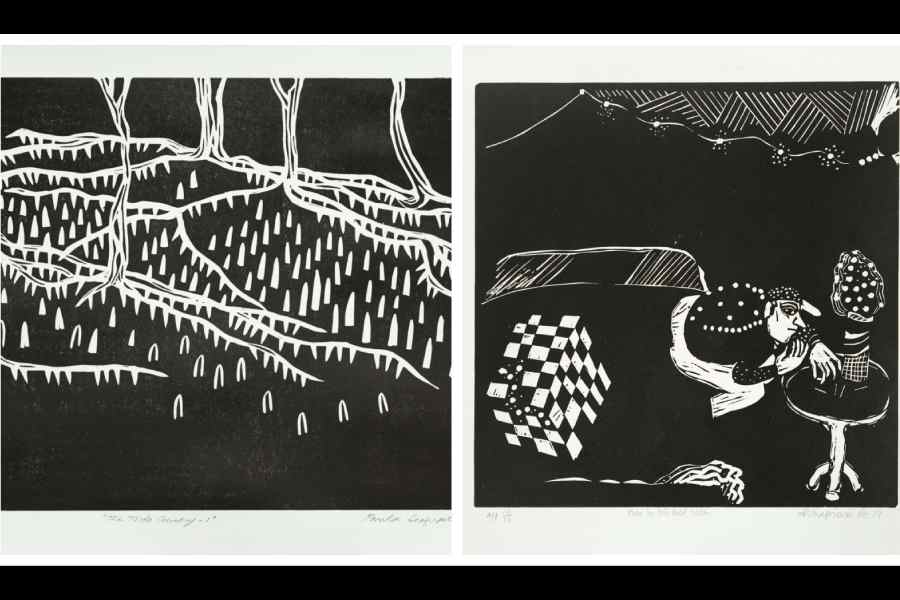Delving the Dark at Akar Prakar laid bare the transformative power of linocut prints. Each of the 45 prints by present and past faculties of the Faculty of Visual Arts, Rabindra Bharati demanded a closer inspection of the play between light and shadow. The stark black-and-white compositions evoked a deeper contemplation of the seen, the unseen, the said, and the unsaid. There is a common belief that black and white brings clarity. Yet, these works illustrated how such a palette can deepen the complexity of interpretation, adding layers of ambiguity and nuance.
Adip Dutta’s works showed a surface sensitivity combined with a weaver’s acuity to enmeshed lines. Paula Sengupta’s pieces, rooted in the Sunderbans, drew life from submerged roots (picture, left). Jayanta Naskar’s Kali images embodied women’s empowerment, while Sujay Mukherjee’s Phantom comics reclaimed socio-political narratives. Dolanchapa Ganguly and Surajit Chanda celebrated nature’s splendour, while Subrata Biswas and Parag Roy explored humanity’s dance with nature. Anindya Pandit and Rajat Sen revealed tensions in human-nature dynamics, with Sreyashi Chatterjee, Sandip Kumar Chakraborty, and Aditya Mitra highlighting fragile ecosystems.
In Parthapratim Deb’s monochrome prints, viewers were drawn to intriguing compositions with fluid lines and balance, urging closer observation. The titles of the prints were primarily descriptive, suggestive of a location or an action, but the image-making retained a certain elusiveness by combining enigma with playfulness. Man in His Bedroom (picture, right) featured a puzzling top-down view, with a giant Rubik’s cube and a hunched figure adding to the mystery.
Similarly, The Figure in Happy Mood appeared intoxicated, traversing the universe with a luminous consciousness matching the sun he stands on against the enveloping night sky. Like many of his prints, Lady in a Dramatic Scene and Surprised Man left the drama and elements of surprise to the imagination, which is a rarity in Indian lino prints. Through such interplay, the prints transcended their medium, becoming meditations on existence and harmony, on what is illuminated and what remains in darkness.










